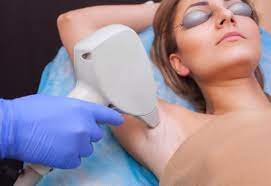Basically, laser hair removal is a procedure that uses pulses of laser light to destroy the hair follicle. This process was first done experimentally for 20 years, before it became commercially available in 1995.
Table of Contents
Preparation
Whether you’re getting laser hair removal for the first time or just a touch up, preparation will help make your treatment a more comfortable experience. It’s important to prepare the area for the procedure, including shaving, to avoid any irritation. It’s also important to know what to expect during the treatment, as well as what to expect after the procedure.
During the procedure, your care team member will apply anesthetic gel and a handheld laser instrument to the area. They’ll then shave the unwanted hair.
After the procedure, your skin may appear red, but this should go away within a day. It’s important to follow up with your care team after the procedure. They’ll provide specific instructions and answer any questions you have.
You’ll also need to stay out of the sun and tanning beds for a few days. You should also use a broad-spectrum sunscreen containing zinc oxide and titanium dioxide.
If you have a medical condition or are taking medications, you should let the best dermatologist know about it before you have the procedure. You might also need to use an anti-itch cream, especially if your skin is sensitive.
Side effects
Using laser hair removal to remove unwanted hair from the body can be a great way to enhance your look. However, you should be aware of the possible side effects. These can range from minor irritation to scarring.
The best thing you can do to prevent any of these side effects is to consult with a qualified professional before going ahead with the procedure. Your provider will be able to answer all your questions.
One of the most common side effects of laser hair removal is redness. This is caused by the intense heat of the laser beam damaging the hair follicles. It should subside within an hour or so. You should also apply ice to the treated area to reduce swelling.
Another side effect is crusting. This may happen as a result of the technician making an error. Usually, it is a minor complication. The crusting can become inflamed and scabby, resulting in a scar.
Other side effects include burning and blistering. These are rare, but can occur if you are not properly prepared for the procedure.
Cost
Using laser hair removal is a great way to get rid of excess hair on your body. However, the cost of the procedure can vary. Depending on the size of the area being treated, the number of treatments, and the quality of the equipment, the cost can run as high as several thousand dollars.
The most common type of device used in laser hair removal is the alexandrite laser. This is a relatively inexpensive device compared to newer technologies. It is also the most versatile, able to treat dark and light skin.
The KENZI IPL Handset is a nifty little gadget that works just as well as a full-blown laser hair removal machine, but is much more affordable. It will cost you a fraction of the cost of a professional laser hair removal session, and will provide you with smooth, hair-free skin. A good clinic will have a qualified dermatologist who has experience in dermatology.
Recovery
Getting laser hair removal is an effective solution for removing unwanted hair from a variety of areas of the body. However, the procedure does involve some minor side effects. In fact, the laser may cause slight discomfort that lasts for a few hours.
A laser treatment is performed by targeting the root of the hair. This allows the technology to work on a wide range of skin types and tones. In the initial stages, the area treated will appear red. This condition usually subsides within two to three hours of the procedure.
If the treatment causes any irritation, you can apply a cool compress to the area. Alternatively, you can use a steroid cream.
In the days following the procedure, you should avoid plucking, waxing, and depilatory creams. You should also wear a broad-spectrum SPF30 sunscreen. If you have any questions, ask your skin specialist.
The treatment may cause blisters. These are a rare side effect. These are more likely to occur in people with darker complexions. If you notice a reaction, you should avoid sun exposure for at least six weeks.

